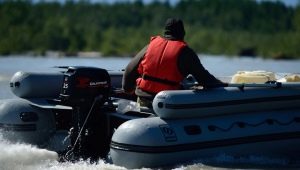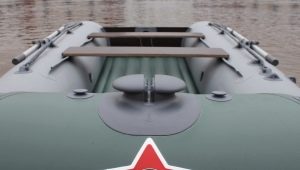Inflatable boats: features, types and choices
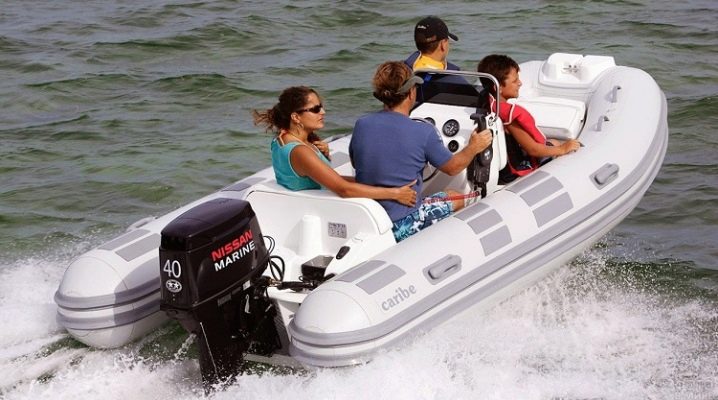
The advent of inflatable boats was a significant advance. They are much more practical and more convenient than old-fashioned wooden products. However, you need to carefully select such boats so that they last as long as possible.
Description
Modern inflatable boats for swimming are made from a variety of materials. They are able to cover relatively short distances. But at the same time, advanced pneumatic models will be able to travel hundreds of kilometers along the rapids of mountain rivers or along the seashore. The main uses of inflatable boats are:
- hunting;
- fishing;
- water sports;
- relaxation;
- rescue and search operations.
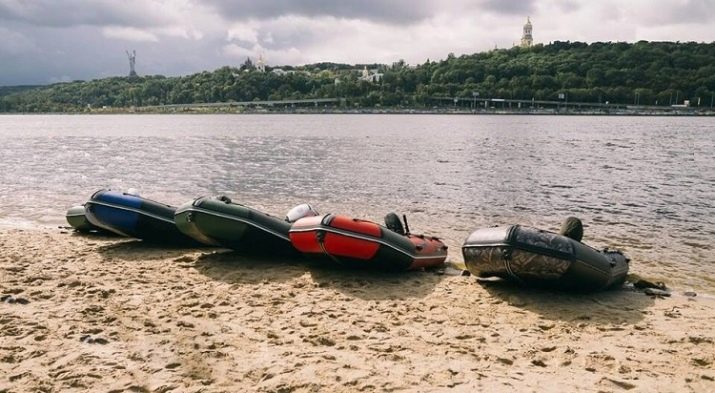
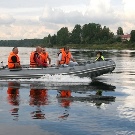
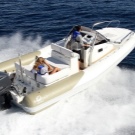
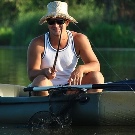
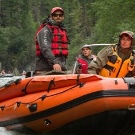

The seriousness of such structures is confirmed by the fact that they are used by the armed forces and special services. It is difficult to find a better means for moving quickly along the coast, pursuing smugglers and border violators, covert landings and special operations.
When folded, inflatable boats are compact. They are easy to carry in a backpack, transport in the trunk or in a motorcycle sidecar.
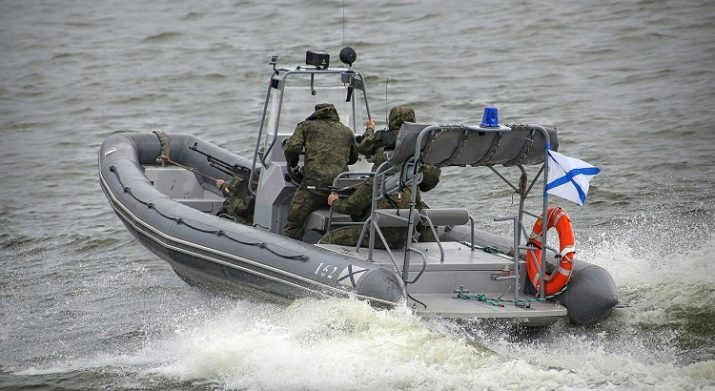
History of occurrence
The inflatable boat has a long history.Its distant prototype can be considered structures made of animal skins or peculiar bags that were used for swimming. However, a full-fledged inflatable boat was made only in the 19th century. A suitable fabric was first made by a subject of the British crown, Charles Mackintosh, in 1825. The decisive improvement in rubber was made by Charles Goodyear in 1839.
In the same year, a landing 10-seat inflatable boat designed by Hancock appeared. In 1843, single-seat rescue boats weighing only 5 kg began to be used. And in 1846, the famous Franklin expedition to the Arctic took a much heavier inflatable boat with them. The first designs were purely utilitarian in nature and were not designed for special comfort for passengers. The next step involved the use of inflatable balloons.
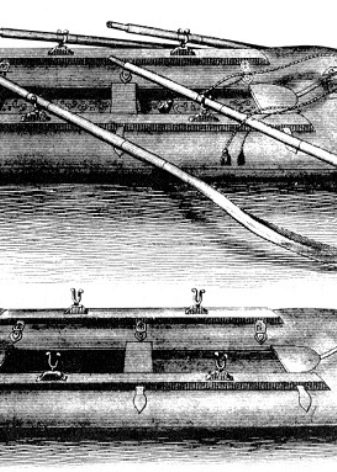

For the first time they were used in the raft "Nonparel", which in 51 days in 1867 made a successful transatlantic voyage. But although the cylinders turned out to be promising, this design itself did not justify itself and was not subsequently used. Based on the accumulated experience, they switched to the creation of boats from isolated compartments. A backpack design boat with 3 seats was first presented at an international exhibition in 1862.
In the 1890-1920s, the inflatable boat was improved in various directions. Some designers tried to reproduce the classic wooden boat, replacing rigid elements with air-filled ones. Others used cylinders or a closed shell to keep more complex products afloat. Still others tried to create a folding boat with the support of a fabric frame using inflatable elements.
But purely inflatable boats were rare then, although some of them were mass-produced.


In 1914-1918, pneumatic boats were actively used for covert sabotage and reconnaissance operations. However, despite this, and even with the advent of inflatable lifeboats in the British Navy, the idea of floating on air chambers was hard to find its way. The situation was changed only because only such equipment turned out to be suitable for rescuing aircraft crews at sea (which were rapidly spreading just in the 1920s). More or less close to the modern look of an inflatable boat developed by the beginning of the 1930s. To create it, a number of inventions had to be made, the authors of which lived in various countries:
- in 1924 they improved the mounting of the bottom according to the height of the cylinders;
- in 1926, the bottom itself was modernized;
- in 1925 they came up with an original steering wheel mount;
- in 1928 they created reliable and executed air valves;
- in 1929 they figured out how to use inflatable boards for storing things;
- in 1933, they combined the filling fur and the inflatable balloon itself.
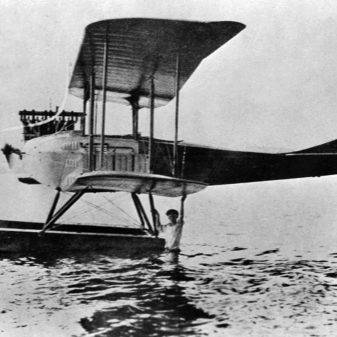

Experiments continued in subsequent years. They took place primarily in the interests of defense, because there was no longer any doubt that the war was on the way. Results in different countries, however, varied greatly. So, American engineers for a long time failed to create structures with good performance properties. In our country, inflatable boats were able to be made in the second half of the 1930s.
But only after the Second World War, thanks to the use of improved materials, it was possible to make boats that attracted the attention of a wide range of people. The decisive step, when it became clear that they deserve the attention of not only professionals, was made by Alain Bombard. He single-handedly crossed the Atlantic in the most ordinary, standard-type boat - and thus proved its reliability.

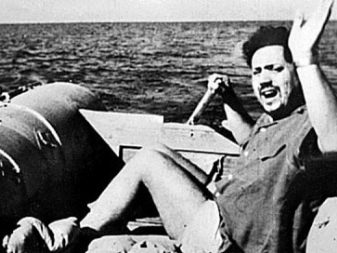
Starting in the 1960s, high-powered inflatable boats began to be widely used as rescue equipment. They immediately detect excellent flotation even in shallow water where no other vessel can reach. Ordinary consumers also appreciated these products. At the moment, at least half of the world fleet of pleasure craft belongs to the inflatable type. Now let's see what is the variety of specific air hulled vessels.
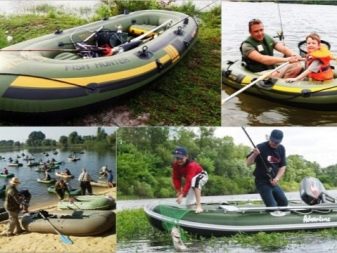
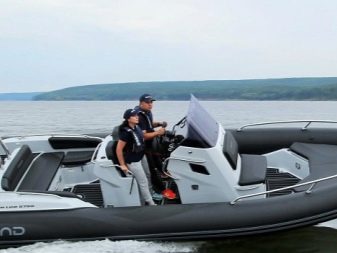
Types of structures, their pros and cons
First of all, it is worth understanding the positive and negative sides of motor and rowing boats. A rowing vessel is always lighter than a motorized craft identical in size and capacity. It is mainly used for short trips, hunting or fishing. Most often, rowboats have a hard bottom. It is made of light alloys or plywood of a special type. But sometimes the bottom is made according to a semi-rigid scheme (with plywood, plastic inserts). If any one cylinder is suddenly damaged, there is no risk of drowning the boat. Moreover, the deformations themselves are very rare. The motor model almost necessarily has a rigid transom. Without it, it is almost impossible to install the motor.
High-pressure inflatable boats differ from watercraft with NDND even in purely external signs. If the bottom is designed for low pressure, its density can vary from 0.4 to 1.1 kg per 1 sq. m. And for boats with NDVD, the situation is reversed - there is only one type of bottom with a density of 1.1 kg.The material is also different - in the first case, ordinary boat PVC, in the second - a special matter of increased density. The difference in air pressure is 2-3 times.

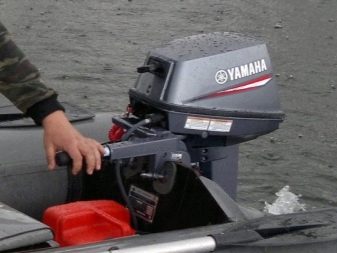
For the most part, NDVD technology today is represented in the AirDeck variant. The increased density of the fabric, among other things, reduces the risk of piercing the bottom with sharp objects.
Sometimes the use of special pumps is required, but most models of this kind are compatible with ordinary automotive pumps. However, low-pressure boats also have their advantages:
- they are noticeably cheaper;
- they are better suited for use in cool windy weather due to enhanced thermal insulation;
- the bottom acts as an additional compartment of its kind;
- consumers note that wave impacts in NDND boats are less noticeable;
- finally, you can do without a hard floor.
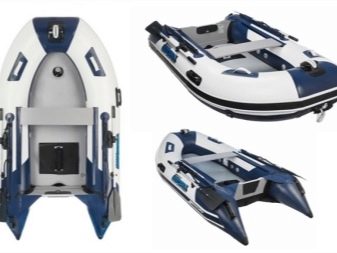
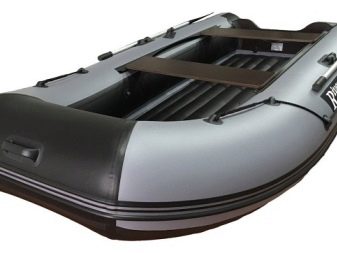
But for all the importance of getting to know the bottom of the craft, one more point cannot be missed. Namely, not everyone likes both traveling with a motor and the need to row with oars. Quite a lot of people choose options with a sail. It should be noted that traditional canvas panels, which have served for centuries and even millennia, are steadily being replaced by more advanced synthetic products. Sailing boats with pairs of ellipsoidal fabric sheets that are attached to the mast from above are best suited for traveling by sea.
This design simplifies the management of the vessel and allows you to do without additional equipment if a strong wind blows. Wing-like shape allows for better aerodynamic quality.If you install a sailing structure on a boat that was not originally designed for it, the capacity will decrease, as the usable volume of the cockpit will be absorbed. And if we talk about new products, inflatable boats with a plastic bottom have appeared relatively recently. Such products:
- reliable;
- can move through relatively shallow water;
- have amazing driving characteristics.

In most cases, they are made with boards made of strong materials. Such boats are stable, so they suit most hunters and fishermen. The reliability of the inflatable boards allows, if necessary, to come close to the shore, even in reeds and places overgrown with shrubs. Some models are equipped with canopies and ladders, which further facilitates the life of users. The double bottom allows for a quiet ride, and some experts generally believe that such vessels are closer in character to full-fledged boats.
Boats with an aluminum bottom are also quite popular now. They are usually combined into one category with watercraft having a bottom made of strong plastic. The English name for this category RIB has been heard by almost everyone interested in fishing and water tourism. The characteristics of such vessels are very high and allow them to be successfully used:
- on patrol;
- in rescue and search activities;
- in the teachings and practical application of scuba divers;
- in fishing;
- in sports competitions and extreme tourism.


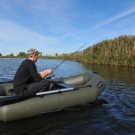


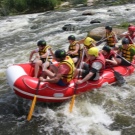
But no less important is whether the boat has a keel. The keel shape of the bottom allows you to provide proper directional stability and will facilitate the entry into the planing mode. The yaw of the vessel is excluded when moving at high speed or with an oncoming wave. The keel is similar in shape to the fin of a fish.But the fact is that in inflatable boats it is made of the same material as the hull. Therefore, to compensate for softness and a good stop, it is necessary to use a more rigid flooring on the deck. The negative aspects of keel boats can be considered:
- complicated design;
- increased price;
- the need to use a more powerful engine for planing mode than usual.
It is appropriate to finish the review of options with inflatable canoes. This type of craft was developed on the basis of the classic "Indian" boats. The geometry of such vessels is perfect for comfortable sailing in a variety of environmental conditions. The control of single-bladed oars is very convenient when you need to go through narrow channels or close to the shore.
A canoe can also be launched both stern and bow forward, in both cases it will not capsize.
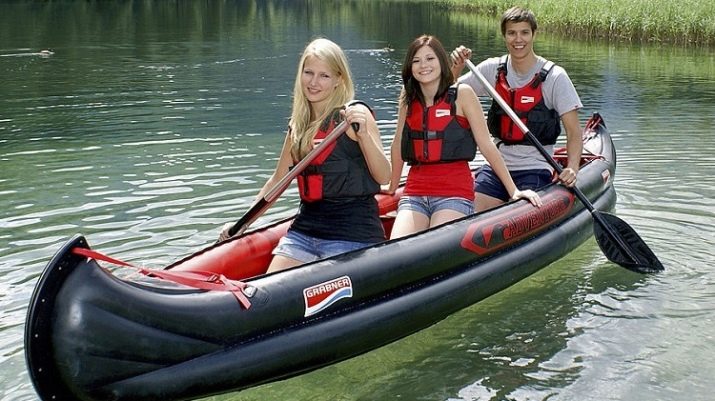
Materials used
PVC
PVC has been used to create inflatable boats for a very long time. You can store boats made from this material all year round without resorting to any additional manipulations. Polymer fabric is quite light and is not subject to particular decay. This material is resistant to frost and does not become the focus of bacterial colonies. PVC is also resistant to hydrocarbons (fuel, lubricating oil of any composition).
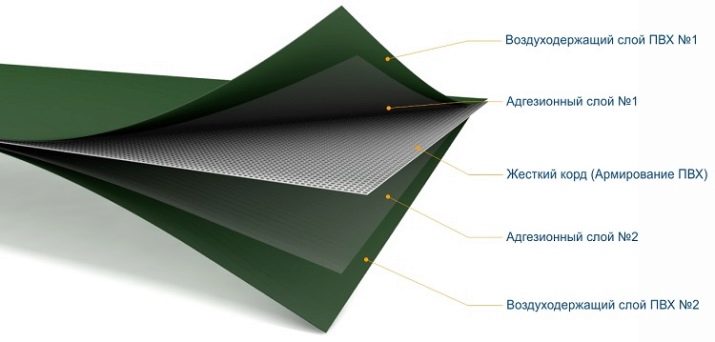
Rubber
A boat made of rubber will have to be protected from contact with fuel and lubricants. It is not all-weather and may crack when exposed to sunlight. However, rubber has its own advantage - this is the price. Only the simplest polymeric water craft can match the cost of rubber structures. In addition, on an old rubber boat, balloons can burst from the heat.
In salt water, the rubber sheath peels off the cord very quickly.In rivers, lakes, this happens much less often, but it can also happen. The service life of rubber is several times less than that of PVC.
The deflation of the balloons is usually very fast. The result is a simple conclusion: a rubber boat cannot boast of anything other than financial savings.

Dimensions
It should be noted that it is possible to judge how big a boat of a particular model is only on the water. PVC products displayed on store windows seem larger than they really are. The actual working volume is always less than the outer perimeter. An ultralight boat is suitable only for those who are going to fish alone. It is easy to assemble and move with your own hands, without asking for anyone's help. The 3.3 m long mini-boat is suitable for fishing or a solo trip.
Already for two people, a more serious watercraft is required - 3.6-3.8 m long. As for light small boats, they have a very serious drawback - it is impossible to install a motor that would provide a gliding mode.
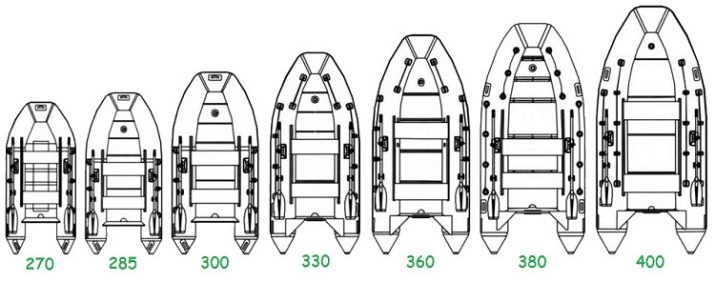
Often such vessels are even purchased without a motor in the basic configuration and go to them using oars. Or, over time, they buy an additional engine. But you can put a low-power motor that will be used to overcome oncoming winds and currents.
When choosing even the most compact boat, you need to remember that the convenience of storing and transporting it is not everything. It is necessary to take into account the information from the technical passport of the craft. All “ready-made” figures in the spirit of “so many people need such and such a carrying capacity” are more of an estimate.
For 1 person there should be at least 0.3 square meters. m of useful area of the vessel. It is calculated by subtracting the size of the cylinders from the total space.
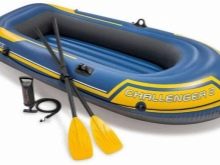

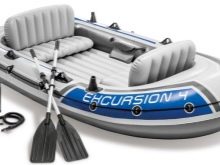
The best models
- It is appropriate to start reviewing the latest models of inflatable boats with a compact Leader Compact-220. It is a rowing version in grey, which is lightweight and safe. It is recommended for connoisseurs of winter fishing. The boat is made on the basis of a single cylinder, divided by a partition into a couple of compartments, so even if punctured, it will remain on the water for some time. A five-layer fabric is used for the manufacture of the case. The operation of the Compact-220 boat is guaranteed for at least 15 years in a row. It performs well both in closed water, and on a big wave, and in rapids reservoirs. The cut of the material is calculated using mathematical modeling.

- The next model in our ranking is the Stefa 2800. This is a two-seater boat with a length of 2.8 m. A fishing rod holder is not provided, but it is provided with a motor. The load capacity declared by the manufacturer is 250 kg. The maximum allowable motor power is 5 hp. s., there is no keel, and the payol is made of special plywood. Stefa 2800 delivery set includes oars, handrail cable, oarlocks. The total weight of the set is from 22 to 24 kg.
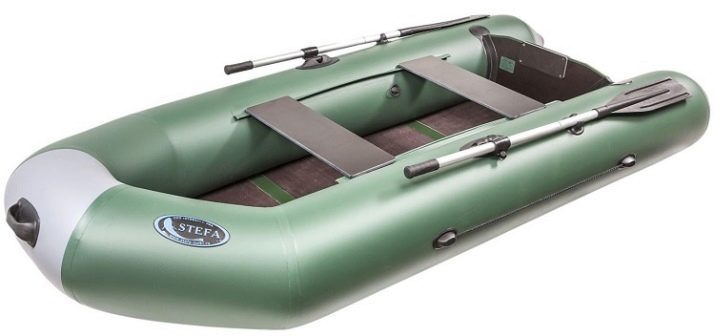
- As for RIB designs, the model has proven itself very well. WinBoat 330R. The rigid fiberglass bottom is very reliable. The manufacturer claims excellent maneuverability and seaworthiness. Condensate that collects between decks is removed using a special valve. The transom is divided into 3 layers. Its entire area is filled with moisture-resistant plywood. The nose is equipped with a U-bolt. The package includes glue and special repair material. The technical parameters are as follows:
- curb weight 43 kg;
- transported weight 450 kg;
- 4 seats, 2 of which are equipped with seats;
- attaching seats according to the lyktros-likpaz scheme;
- cylinder diameter 0.42 m.
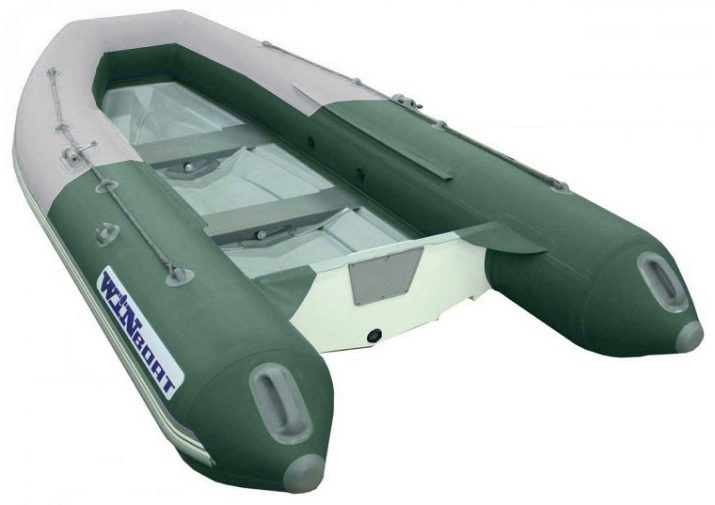
- Of Russian-made boats, we can recommend "Arrow 330" (also belonging to the RIB category). This design is positioned as a great helper for fishermen and tourists. The folding fiberglass bottom simplifies the preparation for the descent - it will take a maximum of 7 minutes. Strelka 330 is also easily transported in car trunks. The standard set of delivery includes soft pads, bow lockers, plywood slates, oars, bow awnings.

- Another good version is BoatMaster 310T. A flat-bottomed, mass-produced boat is distinguished by the fact that the typical keel is replaced by a small polymer keel-fin. This decision made it possible to reduce the turning radius, reduce the weight and dimensions of the craft. The designers provided for a stationary transom with a thickness of 0.018 m. On such a transom, motors with a power of up to 6 hp can be installed. With. With a hard plastic bottom, you can choose more models such as:
- Albatros AV330;
- Aqua-Storm Stk400;
- Admiral 290.
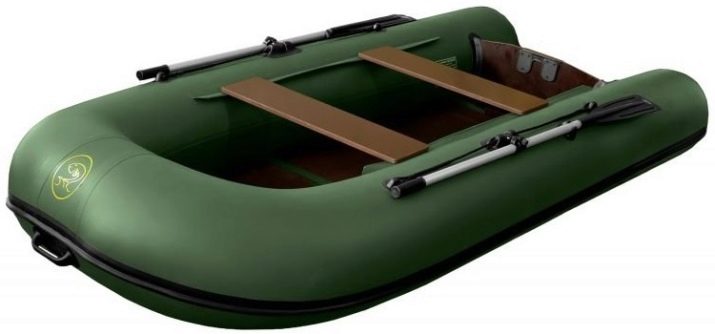
With NDND, it is recommended to pay attention to:
- "Hunter 320 LKA";
- "Stealth 315 Aero";
- "Gladiator E380";
- "Flagship 320 NDND".
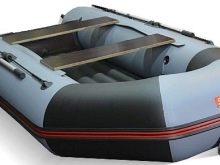
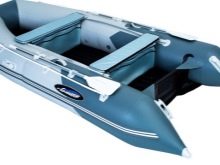
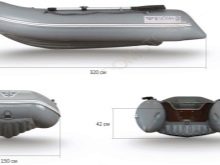
How to choose?
The choice of an inflatable boat is directly related to how and where it should be used. Tourists and those who use boats for short passages will be pleased with the rowing structures. For everyone else, it is better to choose a motorized watercraft that is physically easier to use. Fishermen and hunters are advised to choose boats of inconspicuous (preferably camouflage) colors. They allow you not to frighten off prey at close range.
The more people you plan to carry, the longer the boat should be. If it is expected that you will have to travel far, motor modifications should be preferred. At the same time, the more cylinders (compartments), the better and more reliable. Spearfishers, divers are advised to purchase boats that will not capsize when landing in full ammunition.
For family vacations, boats with 3 or more seats are designed.
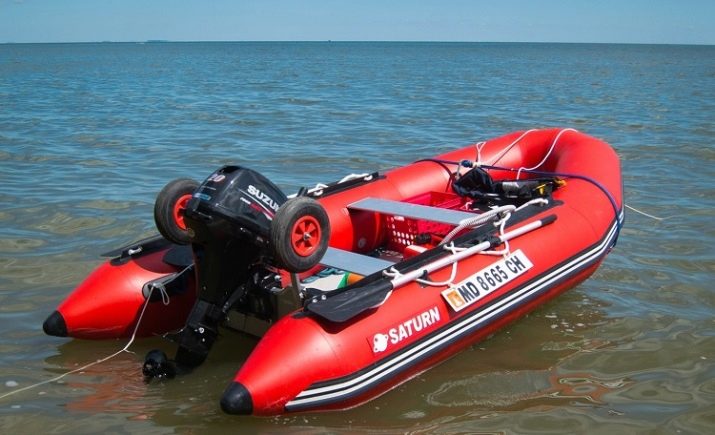
It is necessary to take into account the climate of a particular place. In very hot weather, light-colored boats heat up less than dark ones - this is both more pleasant and helps to extend the life of the boat. As for the number of layers, its increase increases both the strength of the structure and its severity. Usually they try to find the optimal balance between these factors. It makes no sense to buy a boat without additional reinforcement - even an ordinary sedge can pierce it.
A separate discussion deserves the choice of boats for the sea. They can be both with a solder bottom and with NDND. The second option turns out to be better and more convenient in practice. At the same time, boats for the sea must be larger than similar boats for fresh water. It is recommended to choose models with higher power four-stroke engines and a larger fuel tank.
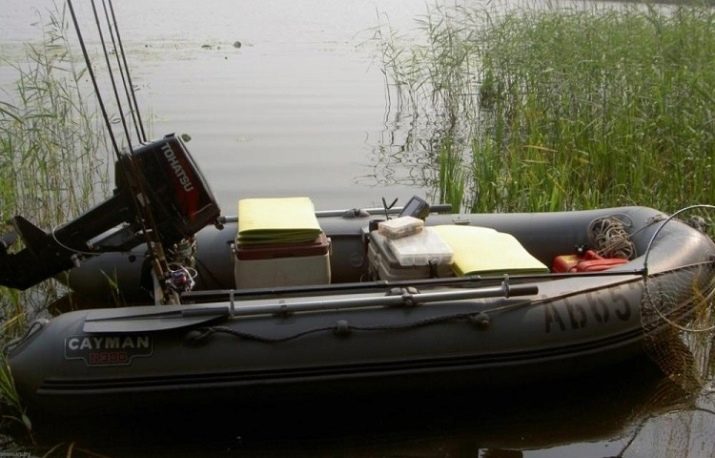
Care rules
Buying an inflatable boat is not so difficult, but it is equally important to properly care for it. Sand is a particular danger. Even worse, if it falls into the gap from the bottom to the cylinders. In this case, the grains of sand work as a crushing abrasive. We must also beware of algae and snags. Experts advise to wash the scales of fish and their mucus from the surface of the boat as soon as possible. For PVC structures, they are more of an aesthetic disadvantage, but rubber can be damaged. Do not think that simply dousing the boat with water will help get rid of the dirt.It must be cleaned manually from all hard-to-reach places. After washing, the ship is turned inside out, dried, and only then sent to storage or go somewhere else on the water.
Categorically it is impossible to wash rubber surfaces with acetone, solvents and similar substances. It is much safer (and better) to use a soap solution or liquid soap. When stopping for an overnight stay or a long day stay, the air tanks are lowered.
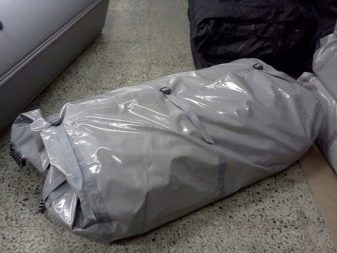

PVC boats are also thoroughly washed inside and out after each use. Use a rag to wipe dry.
For information on how to choose a quality PVC inflatable boat for fishing, see the following video.






















